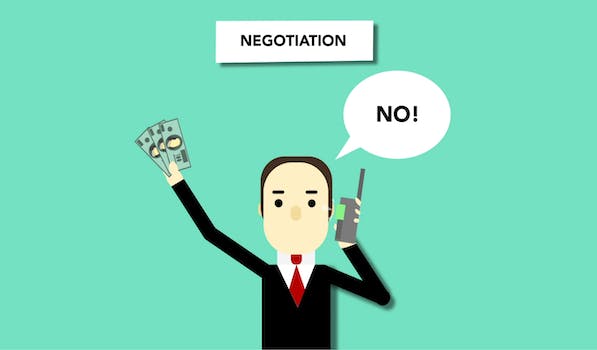How To Save Money In Your Business
Cutting Costs: Simple Ways to Reduce Business Expenses
As a business owner, you are always looking for ways to save money and increase profits. Cutting costs is one of the most effective ways to achieve this goal. However, it can be challenging to know where to start. Here are some simple ways to reduce business expenses and save money.
1. Review Your Expenses
The first step in cutting costs is to review your expenses. Take a look at your monthly bills and see where you can make cuts. Are there any services or subscriptions that you are not using? Can you negotiate a better deal with your suppliers? By reviewing your expenses, you can identify areas where you can save money.
2. Go Paperless
Going paperless is not only good for the environment, but it can also save you money. Printing, copying, and mailing documents can be expensive. By going paperless, you can reduce these costs. You can use digital documents and email to communicate with your clients and suppliers. You can also use online tools to manage your business, such as accounting software and project management tools.
3. Use Energy-Efficient Equipment
Energy-efficient equipment can help you save money on your energy bills. You can replace your old equipment with new, energy-efficient models. You can also use power-saving settings on your computers and other devices. By using energy-efficient equipment, you can reduce your energy consumption and save money.
4. Outsource Tasks
Outsourcing tasks can be a cost-effective way to get things done. You can hire freelancers or contractors to handle tasks such as bookkeeping, marketing, and customer service. This can save you money on salaries, benefits, and office space. You can also save time by outsourcing tasks, allowing you to focus on growing your business.
5. Negotiate with Suppliers
Negotiating with suppliers can help you get better deals on the products and services you need. You can ask for discounts, bulk pricing, or payment terms that work for your business. By negotiating with suppliers, you can save money on your expenses.
6. Use Social Media for Marketing
Social media can be a cost-effective way to market your business. You can create social media profiles for your business and use them to connect with your customers. You can also use social media to promote your products and services. By using social media for marketing, you can save money on advertising and reach a wider audience.
7. Use Cloud Computing
Cloud computing can help you save money on IT expenses. You can use cloud-based software and services to manage your business. This can save you money on hardware, software, and IT support. You can also access your data and applications from anywhere, making it easier to work remotely.
In conclusion, cutting costs is an essential part of running a successful business. By reviewing your expenses, going paperless, using energy-efficient equipment, outsourcing tasks, negotiating with suppliers, using social media for marketing, and using cloud computing, you can save money and increase profits. These simple steps can help you achieve your business goals and take your business to the next level.
Maximizing Profits: Tips for Increasing Revenue and Saving Money
As a business owner, you are always looking for ways to maximize profits and save money. Whether you are just starting out or have been in business for years, there are always opportunities to cut costs and increase revenue. Here are some tips on how to save money in your business.
1. Review Your Expenses
The first step in saving money is to review your expenses. Take a look at your monthly bills and see where you can cut costs. Are there any subscriptions or services that you are paying for but not using? Can you negotiate a better rate with your suppliers? By reviewing your expenses, you can identify areas where you can save money.
2. Go Green
Going green is not only good for the environment, but it can also save you money. By reducing your energy consumption, you can lower your utility bills. You can also save money by using eco-friendly products and materials. For example, using LED light bulbs instead of traditional bulbs can save you money on your electricity bill.
3. Outsource
Outsourcing can be a cost-effective way to get work done. Instead of hiring a full-time employee, consider outsourcing tasks to a freelancer or contractor. This can save you money on salaries, benefits, and office space. Just make sure to do your research and find a reputable freelancer or contractor.
4. Use Technology
Technology can help you save money in many ways. For example, using cloud-based software can save you money on IT costs. You can also use social media and email marketing to reach customers without spending money on traditional advertising. Additionally, using video conferencing can save you money on travel expenses.
5. Negotiate
Negotiating is a key skill for any business owner. Whether you are negotiating with suppliers, landlords, or clients, it is important to get the best deal possible. Don’t be afraid to ask for a discount or a better rate. You may be surprised at how much money you can save by negotiating.
6. Buy Used
Buying used equipment and furniture can save you a lot of money. Instead of buying new, consider purchasing used items from online marketplaces or local businesses. Just make sure to inspect the items before buying to ensure they are in good condition.
7. Cut Back on Office Space
If you have a physical office, consider cutting back on your space. You may be able to save money by downsizing or sharing office space with another business. You can also allow employees to work from home, which can save you money on rent and utilities.
8. Offer Flexible Work Arrangements
Offering flexible work arrangements can save you money on salaries and benefits. For example, you can offer part-time or contract positions instead of full-time positions. You can also offer telecommuting or flexible schedules, which can save you money on office space and utilities.
9. Use Free Resources
There are many free resources available to business owners. For example, you can use free software and apps instead of paying for expensive programs. You can also attend free webinars and workshops to learn new skills and strategies.
10. Track Your Expenses
Finally, it is important to track your expenses. By keeping track of your spending, you can identify areas where you can save money. You can also create a budget and stick to it, which can help you avoid overspending.
In conclusion, there are many ways to save money in your business. By reviewing your expenses, going green, outsourcing, using technology, negotiating, buying used, cutting back on office space, offering flexible work arrangements, using free resources, and tracking your expenses, you can maximize profits and achieve success.
Going Green: Eco-Friendly Strategies for Saving Money in Your Business
As a business owner, you’re always looking for ways to save money. One way to do this is by going green. Not only is it good for the environment, but it can also save you money in the long run. Here are some eco-friendly strategies for saving money in your business.
1. Switch to LED lighting
One of the easiest ways to save money on your energy bill is by switching to LED lighting. LED lights use less energy than traditional incandescent bulbs and last longer, which means you’ll save money on replacement costs. Plus, they’re more environmentally friendly because they don’t contain harmful chemicals like mercury.
2. Use energy-efficient appliances
Another way to save money on your energy bill is by using energy-efficient appliances. Look for appliances with the Energy Star label, which means they meet strict energy efficiency guidelines set by the U.S. Environmental Protection Agency. These appliances use less energy than traditional appliances, which can save you money in the long run.
3. Implement a recycling program
Implementing a recycling program in your business can also save you money. By recycling paper, plastic, and other materials, you can reduce your waste disposal costs. Plus, recycling is good for the environment because it reduces the amount of waste that ends up in landfills.
4. Use eco-friendly cleaning products
Switching to eco-friendly cleaning products can also save you money. These products are often made with natural ingredients that are safer for the environment and your employees. Plus, they’re often more concentrated than traditional cleaning products, which means you’ll use less product and save money in the long run.
5. Encourage telecommuting
Encouraging your employees to telecommute can also save you money. By allowing your employees to work from home, you can reduce your office space needs, which can save you money on rent and utilities. Plus, telecommuting is good for the environment because it reduces the amount of emissions from commuting.
6. Use digital documents
Using digital documents instead of paper can also save you money. By reducing your paper usage, you can save money on paper, ink, and printing costs. Plus, digital documents are easier to store and organize, which can save you time and money in the long run.
7. Install low-flow toilets and faucets
Installing low-flow toilets and faucets can also save you money on your water bill. These fixtures use less water than traditional fixtures, which can save you money in the long run. Plus, they’re more environmentally friendly because they reduce the amount of water that is wasted.
In conclusion, going green can save you money in your business. By implementing these eco-friendly strategies, you can reduce your energy and water bills, save money on waste disposal and cleaning products, and even reduce your office space needs. Plus, you’ll be doing your part to protect the environment. So why not give it a try? Your wallet and the planet will thank you.
Outsourcing vs. In-House: Which Option Saves You More Money?
As a business owner, you are always looking for ways to save money and increase profits. One of the biggest decisions you will face is whether to outsource certain tasks or keep them in-house. Both options have their advantages and disadvantages, and it can be difficult to determine which one will save you more money in the long run.
Outsourcing is the process of hiring an external company or individual to perform a specific task or service for your business. This can include anything from accounting and bookkeeping to marketing and customer service. The main advantage of outsourcing is that it can be more cost-effective than hiring an in-house team. You only pay for the services you need, and you don’t have to worry about the overhead costs associated with hiring and training employees.
Another advantage of outsourcing is that it allows you to access specialized expertise that may not be available in-house. For example, if you need help with your social media marketing, you can hire a social media expert who has years of experience and can help you develop a strategy that will drive results. This can be much more effective than trying to do it yourself or hiring someone who is not an expert in the field.
However, outsourcing also has its disadvantages. One of the biggest is that you may not have as much control over the quality of work as you would with an in-house team. You are relying on an external company or individual to deliver the results you need, and if they don’t meet your expectations, it can be difficult to make changes or hold them accountable.
In-house teams, on the other hand, are employees who work directly for your business. They are typically more invested in the success of your company and can be easier to manage and train. In-house teams also give you more control over the quality of work and can be more responsive to your needs.
However, in-house teams can be more expensive than outsourcing. You have to pay for salaries, benefits, and overhead costs, which can add up quickly. In addition, you may not have access to the same level of expertise as you would with outsourcing, especially if you are a small business with limited resources.
So, which option saves you more money? The answer depends on your specific business needs and goals. If you need specialized expertise and don’t have the resources to hire an in-house team, outsourcing may be the best option. However, if you have a larger budget and want more control over the quality of work, an in-house team may be the way to go.
Ultimately, the key to saving money in your business is to carefully evaluate your options and choose the one that makes the most sense for your specific situation. Don’t be afraid to experiment and try different approaches until you find the one that works best for you. With a little bit of research and planning, you can save money and increase profits in your business.
Negotiating with Vendors: How to Get the Best Deals and Save Money
As a business owner, one of your top priorities is to save money wherever possible. One way to do this is by negotiating with your vendors to get the best deals. Here are some tips on how to negotiate effectively and save money for your business.
Firstly, do your research. Before you start negotiating, make sure you know what the market price is for the products or services you are purchasing. This will give you a baseline to work from and help you determine what a fair price is. You can also use this information to compare prices from different vendors and see who is offering the best deal.
Next, be prepared to walk away. If a vendor is not willing to negotiate or is not offering a price that is within your budget, don’t be afraid to walk away. There are plenty of other vendors out there who may be willing to offer a better deal. By being willing to walk away, you are showing the vendor that you are serious about getting the best deal possible.
When negotiating, be clear about what you want. Make sure the vendor understands exactly what you are looking for and what your budget is. This will help them tailor their offer to meet your needs and ensure that you are getting the best value for your money.
Another tip is to be flexible. Sometimes, vendors may not be able to offer you exactly what you are looking for at the price you want. In these cases, be open to alternative solutions. For example, if a vendor cannot offer you a discount on a product, they may be able to offer you a discount on shipping or other services.
It’s also important to build a relationship with your vendors. By establishing a good working relationship, you may be able to negotiate better deals in the future. This can be done by being respectful, communicating clearly, and paying your bills on time.
Finally, don’t be afraid to ask for extras. Vendors may be willing to throw in additional products or services if they know it will help secure your business. For example, if you are purchasing a large quantity of a product, the vendor may be willing to offer free shipping or a discount on future orders.
In conclusion, negotiating with vendors is an important part of saving money for your business. By doing your research, being prepared to walk away, being clear about what you want, being flexible, building a relationship, and asking for extras, you can get the best deals and save money for your business. Remember, every dollar you save is a dollar that can be reinvested in your business and help it grow.





